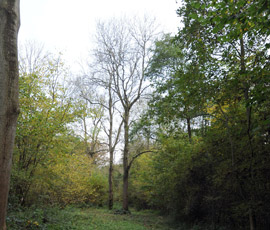Tips for spotting ash tree disease

Time is of the essence if Britain’s woodlands are to be safeguarded against ash dieback disease, say experts.
Caused by the fungus Chalara fraxinea, ash dieback was found in the UK for the first time in young ash plants at a Buckinghamshire nursery earlier this year. But the disease has been present in Europe since the early 1990s.
The UK import ban was imposed after ash dieback was confirmed in East Anglia in trees not connected with nursery-supplied saplings. This suggests the disease entered Britain by natural means – perhaps carried by the wind, birds or on clothing, footwear or vehicles.
The most easily spotted sign is blackened, dead leaves. This can make identification difficult when autumn leaves are falling anyway. Other signs include lens-shaped lesions on stems and branches, and trees with withered tops and shoots.
Affected trees are removed and destroyed by burning or deep burial on site. Equivalent measures are being taken on Forestry Commission land. DEFRA says here is no evidence that the pathogen persists in felled trees and wood products.
Experts from the University of East Anglia have developed a free smartphone app – at www.ashtag.org – that enables anyone to photograph a diseased ash leaf, “geo-tag” its exact location and send the picture to plant pathologists who will identify whether the tree is infected.
Toby Hammond, who helped develop the app, said: “We don’t want the already over-stretched agencies like the Forestry Commission being overwhelmed with reports of ‘brown leaves’, but we believe technology can help here.”
Fungus is ‘biggest threat since Dutch elm disease’
